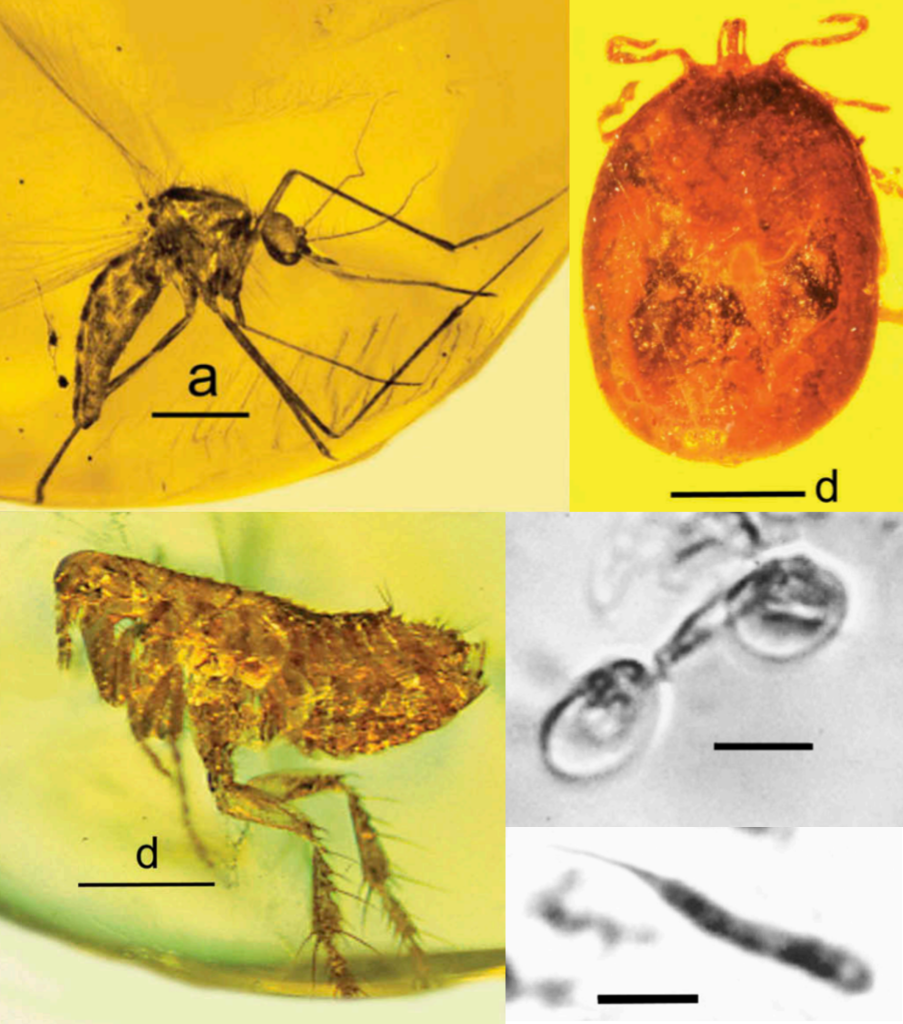Listen to Episode 134 on PodBean, YouTube, Spotify, or wherever and however you prefer!
Blood is nutritious, easy to digest, and not hard to come by, so it’s no surprise that thousands of animals around the world have evolved a taste for the stuff. This episode, we discuss the diversity, adaptations, and evolutionary history of Sanguivores.
In the news
Iberospinus is a new spinosaurid from the spinosaur hot-spot of Iberia
Dearc is a new pterosaur, the largest known from the Jurassic Period
Guemesia is a new abelisaur, a rarity for this particular region of Argentina
Two new plants from between the basalt beds of the Deccan Traps
A Taste for Blood
Blood is the specialized fluid that runs through the veins of vertebrate animals, delivering oxygen and nutrients to the tissues of the body while collecting the byproducts of metabolism for disposal. It’s a cocktail of vital ingredients, including a variety of blood cells, nutrients, vitamins, waste products, and more. Blood is nutritious, easy to digest, and easy to come by, so it’s unsurprising – if a bit unsettling – that thousands of animals have evolved a taste for the stuff.

Top left: Mosquito (Ochlerotatus notoscriptus). Image by JJ Harrison, CC BY-SA 3.0
Top right: Pacific lamprey (Entosphenus tridentatus). Image by USFWS, CC BY-NC 2.0
Bottom left: Medicinal leech (Hirudo medicinalis). Image by GlebK, CC BY-SA 3.0
Bottom right: Common vampire bat (Demodus rotundus). Image by Uwe Schmidt, CC BY-SA 4.0
Sanguivory refers to the habit of eating blood (also known as hematophagy or, if you’re feeling dramatic, vampirism). It has evolved among vertebrates (including candirus, vampire finches, and vampire bats), arthropods (such as mosquitoes, fleas, ticks, and many more), and other invertebrates (for example, leeches, vampire snails, and salmon lice). Some are facultative sanguivores, eating blood only occasionally, while others are obligate sanguivores, spending all or some of their lives eating only the red stuff. Most feed on the blood of vertebrate animals, though some feed on similar fluids, such as the hemolymph of insects.
Blood might be easy to find, but it’s not always easy to work with. As a result, sanguivores all around the world have convergently evolved similar habits for dining on blood. These include: specialized mouthparts for piercing skin and draining fluids; saliva containing compounds to numb pain and prevent blood clotting; digestive systems that are particularly good at disposing of excess water; and symbiotic gut microbes that help break down blood products and protect against disease.
The idea of a blood-sucking animal might be unsettling, especially if you – like most animals – prefer the thought of your blood staying right where it belongs. And while some sanguivores are hosts of particularly nasty diseases (including malaria, Lyme disease, bubonic plague, and more), most are entirely harmless to humans, and many are important components of their ecosystems, often serving as abundant sources of food for larger animals.
A Deep History of Blood-Eaters
Parasites are not normally well-represented in the fossil record, and yet there are some examples of fossilized sanguivores. Fossil lampreys are known from sites back to the Paleozoic Era, including the Mazon Creek Fossil Beds; leech cocoons have been found fossilized all over the world; and several species of extinct vampire bats have been identified from remains in the Americas, including Desmodus draculae, the largest known vampire bat in history. By far the best-represented group of fossil sanguivores are arthropods: ticks, mosquitoes, sandflies, lice, and many more have been found preserved in amber from as far back as the Cretaceous Period, and a number of these even have disease-causing parasites in their guts.

Top left: Aedes mosquito in Dominican amber, Miocene.
Top right: An engorged tick in Dominican amber, Miocene.
Bottom left: A flea in Dominican amber, Miocene.
Bottom right: Two images of parasites found within a sandfly in Myanmar amber, Cretaceous. The two images depict different life stages of a parasite closely related to modern parasites that cause leishmaniasis.
All images from Poinar, 2018
There has been plenty of research examining how sanguivory might evolve from ancestors as disparate as plant-eaters, insect-eaters, or different types of parasites. On the one hand, it’s difficult to track down the details of blood-eating evolution, since the fossil record is pretty scant, while on the other hand, sanguivores are so diverse that there have probably been many, many different paths that evolution has taken to arrive at this highly specialized lifestyle.
Sink Your Teeth In
A Taste For Blood
Is it safe to drink blood?
Dark Banquet: Blood and the Curious Lives of Blood-Feeding Creatures (Book)
The Biology of Blood-Sucking Insects (Book)
Fossil sanguivorous arthropods with pathogens (technical)
The “giant” extinct vampire bat, Desmodus draculae
—
If you enjoyed this topic and want more like it, check out these related episodes:
We also invite you to follow us on Twitter, Facebook, or Instagram, buy merch at our Zazzle store, join our Discord server, or consider supporting us with a one-time PayPal donation or on Patreon to get bonus recordings and other goodies!
Please feel free to contact us with comments, questions, or topic suggestions, and to rate and review us on iTunes
Regarding hemophagy — a term I’ve seen more often than sanguivory (but scientific literature in the life sciences is outside of my scientific area, which is engineering) — and humans, blood-drinking does happen with peoples who keep cattle, such as the Maasai, as tapping a vein for a little blood is less damaging to an animal than slaughtering it for meat.
Of course, black pudding and blood sausage both have a long history in European diets, but neither seems to have crossed the Atlantic.
LikeLike